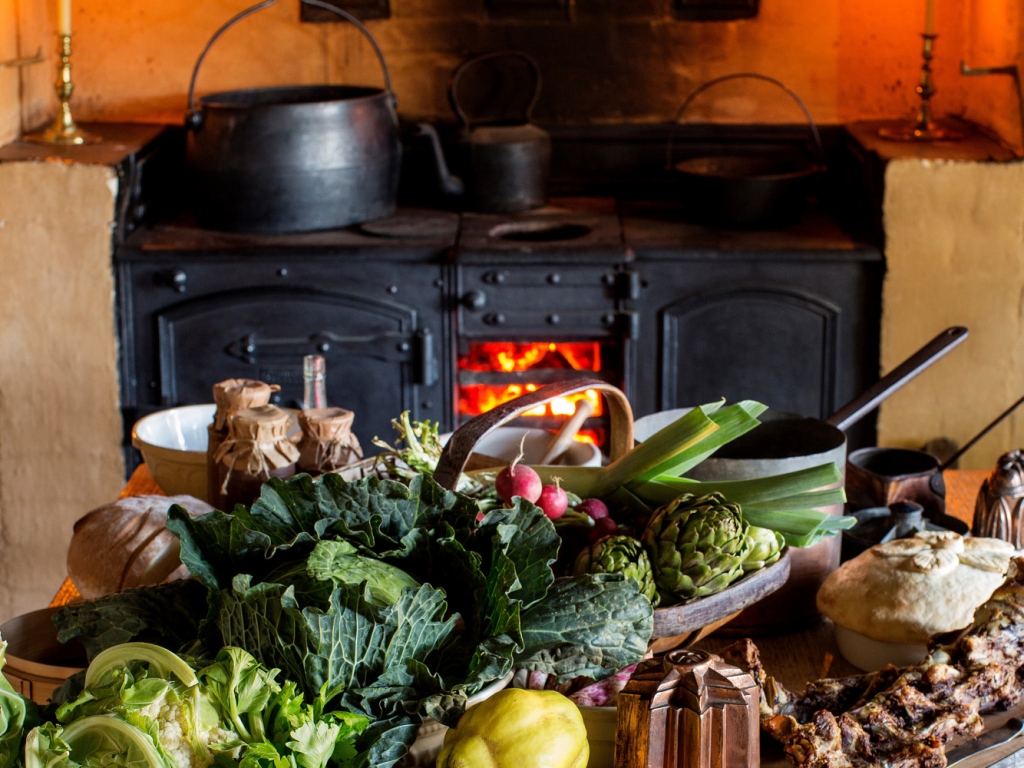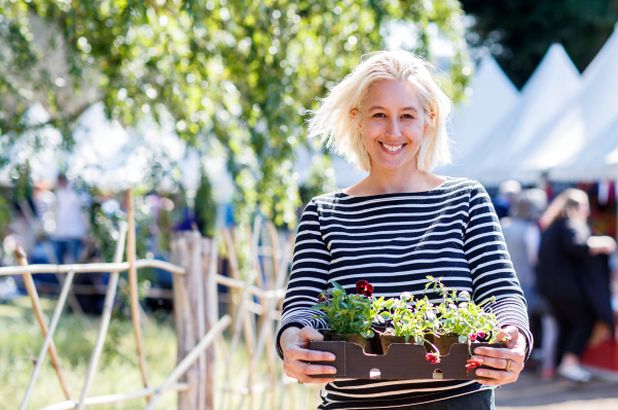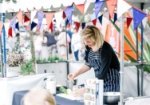“It is now Spring, & the Eye is delighted with a most beautiful variegated Landscape – Almonds – Apricots, Pear and Apple Trees are in full bloom. The native shrubs are also in flower, & the whole Country gives a grateful perfume.”
Elizabeth Macarthur to her friend Miss Kingdon, Parramatta, 1798
Our annual Spring Harvest Festival is being held this Sunday 13 October at Australia’s oldest surviving colonial homestead, Elizabeth Farm at Parramatta. Join us for a feast of delicious talks, tours, demonstrations and hands-on activities. Wander the garden in all its springtime glory and picnic on the carriage loop lawn in front of the house with brunch and lunch offers from our artisan stallholders.

A table of abundance at Elizabeth Farm. Photo © James Horan for Sydney Living Museums
“Our climate is delightful, and we have in high perfection and in great abundance the fruits of warm and cold climates. In our garden, which is large we have Oranges, Lemons, Olives, Almonds, Grapes, Peaches, Apricots, Nectarines, Meddlars, Pears, Apples, Raspberries, Strawberries, Walnuts, Cherries, Plums. These fruits you know. Then we have the Loquat, a Chinese fruit, the Citron, the Shaddock and the Pomegranate, and perhaps some others that I may have forgotten to enumerate, such as the Cherry and Guava.”
Elizabeth Macarthur to Eliza Kingdon, 1816

Freshly baked scones made by the staff at the Elizabeth Farm Tearoom. Photo © James Horan for Sydney Living Museums
Sharing food, sharing knowledge
Along with drop-in activities including making salt-rubs, rasping and lemon sherbets, there are demonstrations of spice blending to create a colonial curry, and the Eastwood-Epping branch of the CWA is sharing their secrets to baking the perfect scone!
Hosted by Barbara Sweeney from Food and Words, this year our talks range from garden to table. Pull up a deckchair for:
Regency spices and plum pudding
Jacqui Newling (‘The Cook’) and Dr Madeline Shanahan explore Regency spices from 17th-century Ireland to colonial Australia – and the kitchen of Elizabeth Farm. Remember – Christmas is only 11 weeks away!!
Flowers in the colonial garden and table
Scott Hill (‘The Curator’) examines the pleasure garden at Elizabeth Farm and kitchen gardens of the 1800s to discover what plants grew here, and how cut flowers were arranged for the 19th century house.
The beauty of the kitchen garden
Sydney Living Museums horticulturist Anita Rayner, Mickey Robertson from Glenmore House and Dr Bernadette Hince from ANU tackle the practical, purposeful and beautiful aspects of planning, planting and
tending a successful kitchen garden. Along with plants commonly grown in the 1800s, discover the structures – from the trellis to the wigwam, cone
and tunnels – used to support plants and ornament the garden.
“We have an abundance, even to profusion, in so much that our Pigs are fed on Peaches, Apricots and Melons in the season. Oranges and Lemons we have all the year round … I have I perceive, omitted to mention the Fig, of which we have many varieties and in abundance…”
Elizabeth Macarthur to Eliza Kingdon Parramatta, March, 1816

Homegrown garden produce and excess vegies to swap and share with Crop Swap Sydney. Photo © James Horan for Sydney Living Museums
Green thumbs
Sydney Living Museums’s horticulturists will be on hand to explain the heritage vegetables planted in the kitchen garden and give you tips for growing your own, or you can visit the Crop Swap Sydney stall throughout the day for advice on growing your own edibles, and rifle through their seed library. And we’d love you to bring your excess produce, seeds or gardening goods to swap with others on the day!

Budding gardener Sophie Bennet-Hawke Photo © James Horan for Sydney Living Museums
Try your hand
Head into the dining room learn how to set a colonial table, Macarthur-style, and create a lotus-fold napkin. Kids will have fun creating their own paper collages designed by artist Alice Lindstrom, and then play with food (literally!) with Diego Bonetto.
There’s loads going on throughout the day – click here for all the information including the delicious offer from artisan food stalls, and times for the talks and demonstrations. We’re looking forward to seeing you there!



